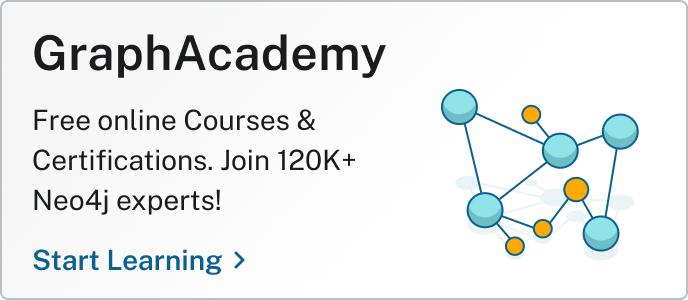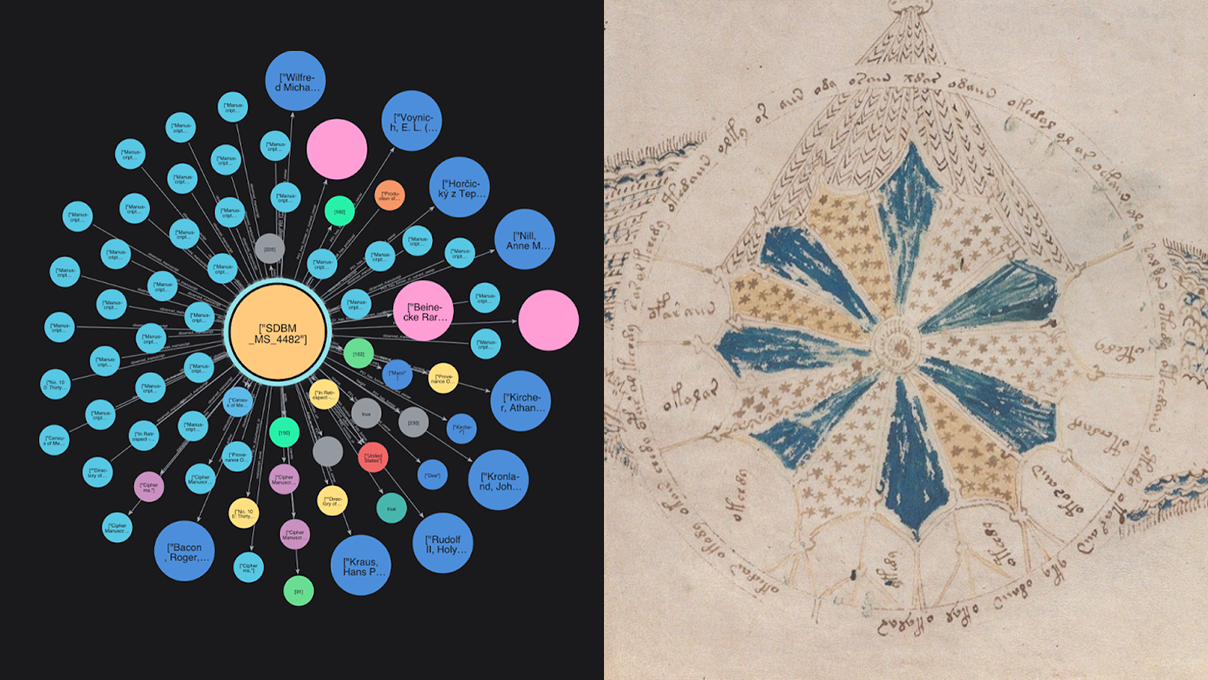Start Your Free Neo4j Certified Journey

Cloud Software Engineer
8 min read

Editor’s Note (June 2025):
This was originally published in late 2023, but its insights are still highly relevant today. The content is very much on target for anyone pursuing either one of the Neo4j certifications, from practical advice to personal motivation. The author, Marijn Scholtens, has also updated several course recommendations to reflect the current GraphAcademy learning paths and exam prerequisites for both the Neo4j Certified Professional and Neo4j Graph Data Science Certification exams.
Interested in validating your graph skills? Neo4j offers two professional certifications — both free, self-paced, and globally recognized.
- Neo4j Certified Professional: For developers and architects working with Cypher, graph modeling, and transactional applications
- Graph Data Science Certification: For data scientists, machine learning engineers, and anyone using graphs for analytics, predictions, and insights
Did you know that apart from the good-old relational databases and NoSQL databases, there are more types of databases? Graph databases are databases where you have a set of nodes that are interconnected to each other via relationships, rather than having relationships between tables in a relational system, or a hierarchical setup in a NoSQL document database. Each node practically serves as a record of its own, so rather than maintaining a table of employees in a company, you create one node for the company and create a node for each employee, which then all separately connect to the company.

Graph databases can have significant benefits over traditional databases, as it is focused on analyzing relationships between entities (abstracted as nodes), finding paths between nodes, and handling large quantities of data (in machine learning, for example). There are multiple implementations of graph databases available, with the main one being Neo4j, which has around 50 percent of the market share for graph databases, followed by Microsoft Azure Cosmos DB (which is multi-model), and smaller players such as Amazon Neptune, available in AWS.
To learn about Neo4j, you can register for an account at the Neo4j GraphAcademy and participate in the self-paced courses offered online at no charge. The platform also offers two certifications: Neo4j Certified Professional and Neo4j Graph Data Science Certification. In this blog, we’ll focus on how you can pass both of these certifications. I managed to pass both of them myself, which you can verify here and here.

Neo4j Certified Professional
The first exam is the general Neo4j Certified Professional exam. To prepare for this exam, I strongly recommend taking the following courses:
Importing CSV Data Into Neo4j used to be a recommended prerequisite but has now been replaced by the above course called Importing Data Fundamentals.
These courses all contain theoretical modules, as well as challenge modules, where you can write some Cypher code yourself (a SQL-like declarative language used to interact with Neo4j) in a provided sandbox.
Apart from the courses above, you should take one of the developer courses below. It doesn’t matter which because the theory is pretty much the same everywhere, and the programming language only matters for the optional practical modules. I chose to do the Python course myself.
I would also recommend Intermediate Cypher Queries as optional and useful, but it isn’t necessary for passing the exam. I haven’t done it myself, but it contains some content that may also be asked on the exam.
The Exam
The exam itself is different from most other IT certifications because it’s a non-proctored open-book exam. However, that doesn’t make it easy to pass, since you have to answer 80 questions within 60 minutes. Some questions are easy with a clear answer found in the theory, whereas other questions will ask you to actually apply knowledge, such as judging a Cypher query on its correctness.
In fact, the exam seems to expect that you’ll be using your study notes and the documentation to help you to get through the exam. Before starting, the exam portal even recommends to have a literal cheat sheet open on the side to help you to answer the questions.
Yet even though the exam is open book, that’s no guarantee for a pass, mainly because you’re pressed for time. On my first attempt, I scored only 73 percent, whereas the minimum passing requirement is 80 percent. After the exam, you’re shown which questions were answered (partially) incorrectly so you can learn from them, although not always the correct answer is shown. On my second attempt, I scored 92 percent and passed.
The exam consists of multiple-choice questions, multiple-select questions, and true/false questions. With 80 questions, you have on average 45 seconds per question to answer. It should be noted that the multiple-select questions don’t tell you whether to select two or three answers, but they do allow for partial credit. So if three answers were correct and you selected two, you receive two out of three points.
Finally, the exam is free, and if you fail, you can take it again in after 24 hours. Don’t feel bad if you fail the first time!
How to Study and Prepare
While going through the courses, I recommend taking lots of notes. And I mean lots of notes, including literally copying Cypher query code from both the theoretical and the sandbox modules. Put all of your notes in a text file you have available on a second monitor so that during the exam, you can quickly search and look up what you need. Then together with the online cheat sheet and Google open in a different tab, you should have all your resources ready.
For the developer course, I recommend only doing the theory modules. Although the practical modules are worth trying out, they aren’t relevant for the exam — and at least for the Python course, I found the practical environment to be buggy. In one module, I was stuck and at some point I tried to see if even the given solution would work, but it didn’t because some functionality seemed deprecated. Rather than debugging for hours, I decided to leave it be and focus only on the theory.
Finally, take note that the allocated time of, for example, one hour per course is largely optimistic. If you want to study in-depth and try out some Cypher query coding yourself in the course sandbox and take many notes, you might easily find yourself spending nearly a whole day on just one course.
Bonus: Free T-Shirt
If you pass the exam, you’re entitled to receive a free Neo4j shirt! Choose your color (black or navy), size (XS to 5XL), and whether male or female cut. You can claim your reward here.
Neo4j Graph Data Science
Neo4j also offers an exam on Graph Data Science. This is where the real fun begins because this is where the dots start to connect (no pun intended), and you’ll understand how Neo4j can be used in a large array of machine learning applications. To prepare for the exam, you need to take two courses:
Although it’s not a formal prerequisite, I recommend you complete the Neo4j Certified Professional exam first because the Graph Data Science exam will assume that you have this knowledge.
The Exam
This exam is very similar to the first one — non-proctored, open book, free, and can be retaken every 24 hours. There are also fewer questions; you need to answer only 40 questions within 60 minutes, so you have 90 seconds on average per question. Again, the questions can be multiple-choice, multiple-select, and true/false.
Although you get fewer questions, they’re considerably harder. You’ll need your notes more than ever, as well as the documentation. During the exam, you’ll find yourself skimming documentation quite a bit since many questions go in-depth about some graph algorithms, and they just cannot be answered using your lecture notes. But that’s OK—that’s the idea of the exam! After all, in the real world, you also have documentation at your disposal to solve real-world problems.
Again, the exam being open book doesn’t guarantee a pass. On my first attempt, I failed with 75 percent correct, so I slightly missed the mark once again. Just like the first exam, you’re shown which questions were (partially) incorrect and why. Having learned from that, I took the exam again the next day and scored 97.5 percent.
How to Study
I recommend taking a similar approach as to the first set of courses, where you take a lot of notes and have these all present in a single .txt file so you can easily look up what you need.
Do note that the Neo4j Graph Data Science Fundamentals course is not a walk in the park. If you don’t have a machine learning background, you’re going have difficulties to understand the presented steps of the workflows and what the algorithms are about. You may want to study up on some topics if you don’t understand something.
Unfortunately, passing this exam does not come with an additional free t-shirt, but you’ll have another certification nonetheless.
A heartfelt thank you to Marijn from all of us at Neo4j for sharing his journey with the community and helping others succeed in theirs.
— The Neo4j Developer Relations Team
Summary
Neo4j is a high-speed graph database with unbounded scale, security, and data integrity for mission-critical intelligent applications. With the online GraphAcademy, it’s fun, easy, and accessible to learn Neo4j. The certifications also make for a nice goal to achieve, and in my opinion, they demonstrate that you actually know something about Neo4j and are ready to apply it in real life.
Learn more in our Neo4j community as we celebrate June 2025 as Neo4j Education and Certification month.
Passing Two Neo4j Certification Exams was originally published in Neo4j Developer Blog on Medium, where people are continuing the conversation by highlighting and responding to this story.








